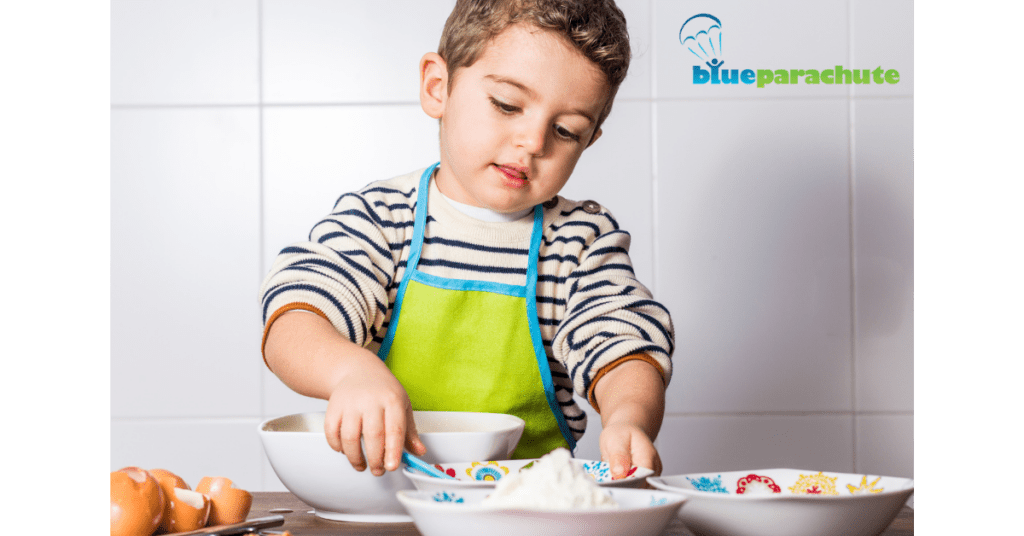Autism Spectrum Disorder: Teaching How to Make Snacks
At Blue Parachute, we recognize the importance of developing essential life skills for individuals on the autism spectrum. One such skill is learning how to make snacks. Teaching children with Autism Spectrum Disorder (ASD) to prepare their own snacks not only promotes independence but also enhances their confidence and fosters valuable life skills. In this blog, we will explore the impact of autism on food preparation, strategies for teaching snack preparation, and how our instructional videos can support this learning process.
How Does Autism Affect Preparing Food?
Autism can impact various aspects of an individual’s life, including their ability to prepare food. Sensory sensitivities, fine motor challenges, and difficulties with executive functioning can all contribute to difficulties in food preparation. However, with the right strategies and support, individuals on the autism spectrum can overcome these challenges and develop the necessary skills to prepare their own snacks.
Teaching Your Child to Prepare a Snack
Teaching your child with autism how to prepare a snack is a gradual process that requires patience, repetition, and individualized approaches. Here are some strategies to consider when teaching snack preparation.
Snack-Making by Establishing a Structured Routine
Creating a structured routine for snack preparation can provide predictability and clarity. Establish a designated time for snack preparation and follow a step-by-step process, breaking it down into manageable tasks. After each step is completed, remember to celebrate the small victories. Using positive reinforcement can go a long way in ensuring that the child is proud of their accomplishments and they will want to continue learning to cook and prepare food.
Visual Supports Help Them See What to Look For
Utilize visual supports such as visual schedules or step-by-step visual guides to help your child understand and follow the snack preparation process. Visual aids can enhance their comprehension and make the steps more accessible. Recipe cards are great for teaching those on the spectrum how to make snacks. Make certain that these cards have simple images on them, making it easier for the ASD child to visualize the steps.
Hands-On Learning Can Make Food Prep Fun
Encourage hands-on learning by involving your child in the entire snack preparation process. Provide them with opportunities to engage in age-appropriate tasks, such as washing fruits or assembling simple snacks. This hands-on experience helps them develop practical skills and a sense of ownership over their snack preparation. When preparing food, remember that some food products might have a consistency or feel that your child dislikes. Don’t get discouraged if making a snack presents unforeseen obstacles. Make notes about which foods they most seemed to enjoy making, and branch out to other snacks which are similar.
How to Prepare Easy Snacks
When teaching snack preparation, it can be beneficial to start with simple and easy-to-make snacks. Consider the following snack ideas that are both nutritious and simple to prepare:
- Fruit kabobs: Allow your child to select their favorite fruits and help assemble them on skewers.
- Yogurt parfaits: Guide your child in layering yogurt, fruits, and granola in a cup or bowl.
- Veggie sticks with dip: Show your child how to wash and cut vegetables, and provide a dipping sauce for added flavor.
How Do You Teach an Autistic Child to Cook?
As your child progresses in their snack preparation skills, you may consider teaching them more advanced cooking techniques. Teaching an autistic child to cook involves building upon the foundational skills they have learned during snack preparation. Start with simple recipes and gradually introduce new techniques and ingredients. Emphasize safety precautions, such as using oven mitts and handling kitchen tools responsibly.
Cooking & Making Snacks With Blue Parachute
At Blue Parachute, we offer a comprehensive library of instructional videos created by Licensed and Certified Behavior Therapists. These videos incorporate Applied Behavior Analysis (ABA) techniques to maximize learning outcomes.
By subscribing to our video resources, you gain access to a wide range of tutorials and demonstrations. These videos serve as a form of autism home support services, and they can support your child’s journey in learning how to make snacks and develop life-long skills.
To learn more about our videos and how they can help your child with ASD, use our online form and contact us today. We are committed to empowering individuals on the autism spectrum and their families by providing accessible and effective resources.
Sources:
- Autism Speaks – Life Skills and Autism
- Autism Parenting Magazine – Cooking With Your Child With Autism
- The Autism Helper – Making Cooking Activities Successful
Related Readings:


